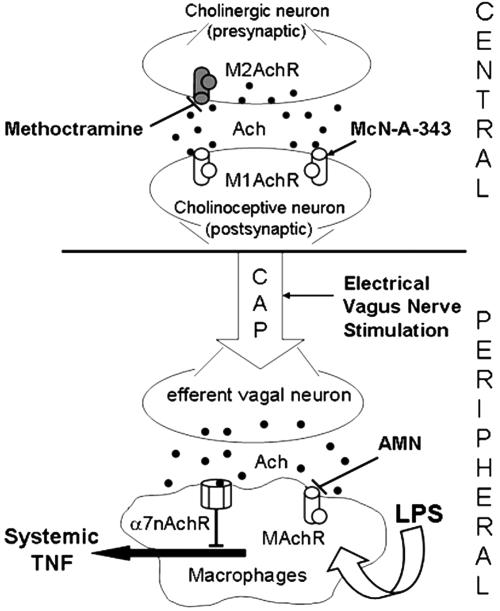Fig. 5.
Central versus peripheral muscarinic cholinergic regulation of the systemic inflammatory response (proposed mechanism). In rodents, the endotoxin-induced systemic TNF release is inhibited by cholinergic signaling derived from efferent vagus-nerve fibers (4, 5). This cholinergic antiinflammatory pathway (CAP) is mediated through α7 nicotinic acetylcholine receptors (α7nAchR) on macrophages (5). Central muscarinic cholinergic activation by stimulation of M1 acetylcholine muscarinic receptors (MAchR, postsynaptic) or inhibition of M2 muscarinic acetylcholine receptors) M2AchR, presynaptic) inhibits systemic TNF release in endotoxemic rats and activates efferent vagus-nerve activity. Activation of the cholinergic antiinflammatory pathway by electrical vagus nerve stimulation reduces systemic TNF levels during endotoxemia through peripheral muscarinic receptor (MAchR)-independent and α7nAchR-dependent mechanisms (see text for details).

